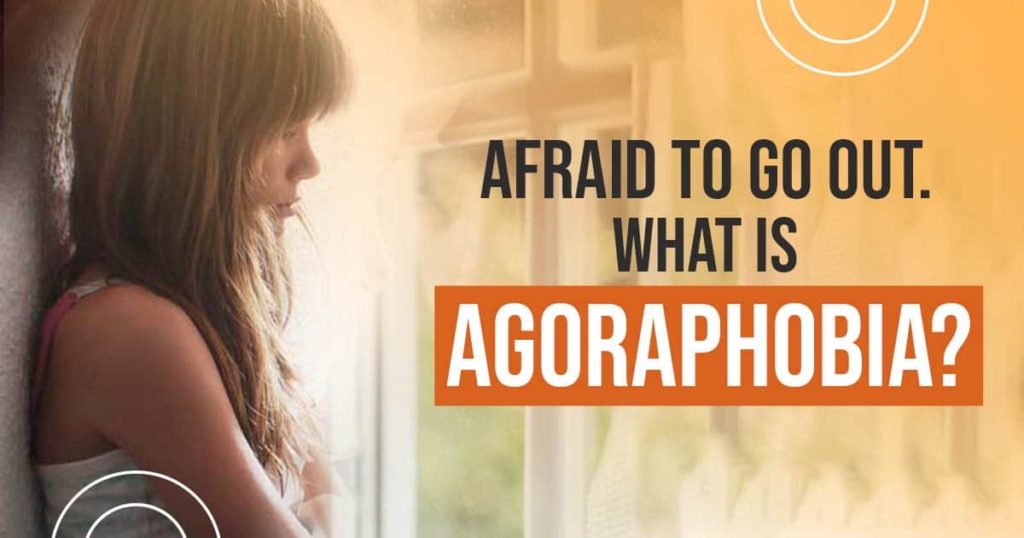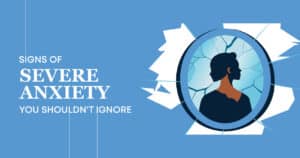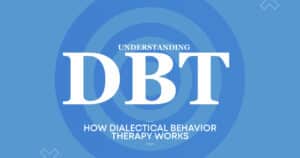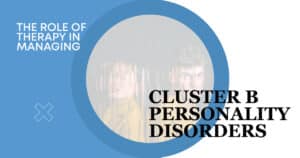Agoraphobia in the United States ranges from 1% to 2% of the population. Adolescents who suffer from it make up about 2% of the population. Leaving the house is something that some teenagers or adults may refuse to do.
Patients can conquer their disorder with medication, cognitive behavioral therapy, and lifestyle modifications. Patients who are diagnosed early on are more likely to benefit from therapies. Let’s learn more about Agoraphobia in this article.
What is Agoraphobia?
Agoraphobia is an anxiety condition characterized by an irrational fear of becoming overwhelmed, trapped, or unable to seek help. People who have Agoraphobia avoid going to new locations or encountering new situations because of their dread and anxiety. These places could include:
- Either open or closed places
- Crowds
- Locations that aren’t in the home
- Transportation services
Agoraphobia Symptoms
Those that have Agoraphobia tend to be:
- worried about long-term travel away from home
- terrified of being the only one in a social group
- apprehensive about losing composure in public
- apprehensive about being trapped in a vehicle with no way out or in an elevator or an automobile
- cut off from others
- both nervous and irritated.
Panic episodes and Agoraphobia frequently occur together. Anxiety and other mental health conditions are occasionally accompanied by a set of symptoms known as panic episodes. A wide range of distressing physical symptoms can accompany panic episodes, including:
- Trembling
- Sweating
- Increased Heart Rate
- Chills
- Shortness of Breath
- Diarrhea
- Dizziness
- Choking
- Hot Flashes
- Nausea
- Numbness
Agoraphobia causes panic attacks in teens and adults who are afraid of being in a stressful or uncomfortable situation, which makes them even more fearful of being out.
What are the Root Causes of Agoraphobia?
There is no recognized reason for Agoraphobia. However, there are several established risk factors for developing agoraphobic tendencies. Among these are the following:
- Depression
- Other fears (such as fear of enclosed spaces or of being among people)
- Anxiety disorders of a different kind (like generalized anxiety or OCD)
- Abuse
- Substance abuse
- Genetics
Women are also more likely than men to suffer from Agoraphobia. It normally starts in adolescence or early adulthood, with a median beginning age of 20 years. On the other hand, the condition’s symptoms can appear at any age.
Agoraphobia Diagnosis
Symptoms and indications are used to determine if a person has Agoraphobia. The doctor may ask about their onset and frequency to better understand your symptoms. Besides your medical history, they’ll also inquire about your family history. A blood test to rule out any physiological causes for your symptoms is also an option.
To be diagnosed with Agoraphobia, your symptoms must match certain criteria in the Diagnostic and Statistical Manual of Mental Disorders of the American Psychiatric Association (DSM). The diagnostic and Statistical Manual of Mental Disorders (DSM) is a manual used by health providers to identify mental health issues.
Having Agoraphobia necessitates experiencing extreme dread or worry in at least two of the following scenarios:
- the use of a train or bus for transportation
- being in public places like a supermarket or a parking lot
- an elevator or an automobile (enclosed spaces)
- in a group of people
- isolation while away from one’s loved ones
Additional criteria must be met before a person can be diagnosed with panic disorder and Agoraphobia. Having panic episodes regularly, as well as the following symptoms following a panic attack, is required.
- a phobia of panic attacks
- panic attack-related anxiety of repercussions, such as cardiac arrest or loss of control
- effect of said panic attacks on your conduct
To be diagnosed with Agoraphobia, your symptoms must be consistent with an underlying medical condition, such as an anxiety disorder. Aside from that, they can’t be the result of any mental illness or drug usage.
What does Treatment for Agoraphobia Entail?
There are a variety of therapies for Agoraphobia, including medication. You’ll probably need various therapy options to get the best results. Top choices include:
Therapy
- Cognitive-Behavioral Therapy (CBT)
Teens or adults with Agoraphobia are most commonly treated with cognitive behavioral therapy (CBT), the most prevalent kind of psychotherapy. Agoraphobics can benefit from cognitive behavioral therapy (CBT). Regaining a sense of self-control in your life can be made easier by learning techniques for coping with stress and replacing unhealthy thoughts with healthy ones.
- Psychotherapy
Regular sessions with a psychotherapist or other specialist are part of psychotherapy, sometimes known as talk therapy. Talking about your anxieties and any problems that might have influenced your fears is an excellent way to start the conversation. Medications and psychotherapy are frequently used together to achieve the best results. Once you’ve learned to manage your anxieties without the help of medication, you can stop using it.
- Exposure Therapy
You can also overcome your concerns with exposure treatment. This therapy introduces you gradually to the things or places you’re afraid of. Over time, your fear may fade away.
Medications
Antidepressants are the most commonly prescribed medication for Agoraphobia, although your doctor may advise other medications. It’s common for doctors to prescribe a mild dose of some of those “feel-good” medications that boost serotonin levels in the brain. Celexa, Lexapro, Sertraline, Prozac, and Venlafaxine are some of the drugs that can assist regulate serotonin levels (Effexor).
At the very least, you’ll have to take medication for six months or even a year. The doctor may begin to reduce the dosage of your medication if you feel much better and are no longer afraid in areas that used to frighten you.
Modifications in Lifestyle
Anxiety reduction isn’t guaranteed by lifestyle adjustments, although they may help alleviate the symptoms of Agoraphobia. Some significant lifestyle changes include:
- Regular physical activity boosts the release of feel-good brain chemicals that reduce stress and elevate mood.
- To improve your general health, you should eat a diet rich in whole grains, veggies, and lean meats.
- Meditating or doing deep breathing techniques daily to relieve stress and prevent panic attacks
It’s advisable to stay away from nutritional supplements and herbs while you’re getting therapy. It’s not certain whether these natural therapies can help alleviate anxiety, and they can also conflict with prescribed medication.
Mental Health Treatment for Teens in Orange County, CA
Hillside Horizon for Teens in Southern California offers treatment programs for anxiety, depression, trauma, and more. If your teenager is exhibiting signs of Agoraphobia, call us at 855-746-8378 to learn more.




